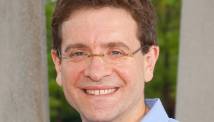Updated 4:59 p.m. EST
NEW ORLEANS Freezing rain and sleet made for a sloppy Christmas trek in parts of the nation's midsection, while residents along the Gulf Coast faced thunderstorms, high winds and tornadoes that were doing damage in some areas.
Winds toppled a tree onto a pickup truck in the Houston area, killing the driver. Icy roads already were blamed for a 21-vehicle pileup in Oklahoma, where authorities warned would-be travelers to stay home.
Trees fell on a few houses in central Louisiana's Rapides Parish but there were no injuries reported so far and crews were cutting trees out of roadways to get to people in their homes, said sheriff's Lt. Tommy Carnline. Possible damage also was reported near McNeil, Miss.
Fog blanketed highways, including arteries in the Atlanta area where motorists slowed as a precaution. In New Mexico, drivers across the eastern plains had to fight through snow, ice and low visibility.
At least three tornadoes were reported in Texas, though only one building was damaged, according to the National Weather Service. Tornado watches were in effect across southern Louisiana and Mississippi.
More than 180 flights nationwide were canceled by midday, according to the flight tracker FlightAware.com. More than half were canceled by American Airlines and its regional affiliate, American Eagle.
American is headquartered and has its biggest hub at Dallas/Fort Worth International Airport.
Christmas lights also were knocked out with more than 70,000 people without power in east Texas, Arkansas, Mississippi and Louisiana.
Meanwhile, blizzard conditions were possible for parts of Illinois, Indiana and western Kentucky with predictions of 4 to 7 inches of snow. Much of Oklahoma and Arkansas braced under a winter storm warning of an early mix of rain and sleet forecast to eventually turn to snow. About a dozen counties in Missouri were under a blizzard warning from Tuesday night to noon Wednesday.
Some mountainous areas of Arkansas' Ozark Mountains could get up to 10 inches of snow, which would make travel "very hazardous or impossible" in the northern tier of the state from near whiteout conditions, the National Weather Service said.
The holiday may conjure visions of snow and ice, but twisters this time of year are not unheard of. Ten storm systems in the last 50 years have spawned at least one Christmastime tornado with winds of 113 mph or more in the South, said Chris Vaccaro, a National Weather Service spokesman in Washington, via email.
The most lethal were the storms of Dec. 24-26, 1982, when 29 tornadoes in Oklahoma, Missouri, Arkansas, Tennessee and Mississippi killed three people and injured 32; and those of Dec. 24-25, 1964, when two people were killed and about 30 people injured by 14 tornadoes in seven states.
Quarter-sized hail reported early Tuesday in western Louisiana was expected to be just the start of a severe weather threat on the Gulf Coast, said meteorologist Mike Efferson at the weather service office in Slidell, La.
Storms along the Gulf Coast could bring winds up to 70 mph, heavy rain, more large hail and dangerous lightning in Louisiana and Mississippi, Efferson said. Furthermore, warm, moist air colliding with a cold front could produce dangerous straight-line winds.
The storm was moving quickly as it headed into northeast Louisiana and Mississippi into the late afternoon and early evening, said Bill Adams at the weather service's Shreveport, La., office.
In Mississippi, Gov. Phil Bryant urged residents to have a plan for any severe weather.
"It only takes a few minutes, and it will help everyone have a safe Christmas," Bryant said.















